Doug Schultz and Josh Johnson - Keep Roofs Healthy With Frequent Inspections - PODCAST TRANSCRIPT
July 1, 2025 at 11:00 a.m.Editor's note: The following is the transcript of a live interview with Doug Schultz and Josh Johnson of Tremco WTI. You can read the interview below or listen to the podcast.
Intro: Welcome to Roofing Road Trips, the podcast that takes you on a thrilling journey across the world of roofing. From fascinating interviews with roofing experts to on-the-road adventures, we'll uncover the stories, innovations and challenges that shape the rooftops over our heads. So fasten your seatbelts and join us as we embark on this exciting Roofing Road Trip.
Karen Edwards: Hello and welcome to another episode of Roofing Road Trips from RoofersCoffeeShop. My name is Karen Edwards and in today's episode, we are welcoming the team from Tremco and WTI to talk about the importance of roof inspections and maintenance for maintaining that roof health. So Doug Schultz, Josh Johnson, welcome to the program.
Josh Johnson: Thank you, Karen.
Doug Schultz: Thank you very much.
Karen Edwards: All right. So let's get started first by telling us a little bit about you. So Doug, maybe you could introduce yourself, tell us what you do at Tremco and talk about how you got into the roofing industry, because I always find that interesting too.
Doug Schultz: Okay. So I'll be with Tremco WTI, it'll be 11 years coming up September 15th. I actually was a correctional officer for 15 years before this job and I had the luck of having, one of my neighbors is Joe Lee and he is the RBM for the Gulf Coast region. And we became friends and one day he's just saying, "Hey, we're hiring." And I was looking for a change in this job, so I thought, "What the heck? Let me give it a shot." So I started out as a tech going all the roofs and doing patch and repair. And then about four years in, I was able to get onto the inspection side. And then about five years in, one year later, the inspection foreman became open. The guy that was there went to work for a sales rep and the spot opened up and Joe asked me if I'd like to fill that spot. And I did. And I've been here, it's been about five years now. Five or six years, been the inspection foreman for the Gulf Coast region, which includes Alabama, Georgia, Florida and Puerto Rico and Mississippi
Karen Edwards: And Mississippi. Okay. So you have a lot of time on the road, I'm sure.
Doug Schultz: Yeah.
Karen Edwards: All right. Josh, tell us a little bit about you.
Josh Johnson: Sure. So I'm currently one of the Gulf Coast regional supervisors. My territory is basically all of southwest and southeast Florida. I work with a couple of different sales reps. I've got a couple of foremen under me and basically, I started the same way Doug did. Started as a tech, came in with the company and also I came into this company because of Joe Lee, same guy. We had mutual friends. I had been in the trades all my life. I did custom cabinetry for 20 years and in out of some different construction type items and whatnot.
Josh Johnson: So always been in the trades in some form or fashion, but he asked if I wanted to possibly come on board with them doing some roofing and I was moving down to Florida at the time and it sounded like a great opportunity for me. Like I said, I love being in the trades and this was just a new opportunity, something new to learn, but a lot of my background could cross over into this. So I took the chance and came on board and it was just a great fit. I worked as a tech for about four years and then got promoted to a foreman and I did that for about five or six years. Then most recently got promoted to a supervisor. So it's been a great company to work for, a great opportunity and there's always room for growth. So yeah, it's been a good thing.
Karen Edwards: That's fantastic. I know that we've talked with WTI team a lot and everybody has said the same thing. It's a great place to work, great culture. So it's good to see that you guys as well agree and that you've been there so long. So let's talk a little bit about what Tremco and WTI, how their approach to roof inspections set it apart from other providers in the industry. What's your secret sauce if you can tell us?
Doug Schultz: Sure. So what we've done with WTI is we've actually developed individual teams across the nation to drive commitment and consistency to complete the inspections for the entire nation. Other roofing companies don't do that. And actually, quite frankly, we didn't do that in the very beginning. It was all scattered around. They almost use it like if the techs needed hours, they would jump to the trim care side and go on those jobs when the passenger repairs slowed up. Well, Joe Lee took a different approach and we got these teams together and we focused just on the inspections and it really helped to drive the consistency up and get our backlog down. So that's what we do that's different is we have individual teams that specialize just in the inspections and they don't do any passenger repair.
Karen Edwards: Okay. So let's talk a little bit about the TremCare program because I know there's different levels of service involved and can you just explain what it is, what's included, why a building owner should consider signing up?
Doug Schultz: Sure. So our main objective is to have the life of the roof last as long as possible. So we offer TremCare Gold and TremCare Platinum service. Those services include, we're going to give you the core construction info of your roof. If you didn't already know what that was, we'll give you the perimeter details and conditions of the roof. We're going to let you know if any penetrations need attention. We're going to give you the overall roof conditions and any problems that we see. We're going to offer recommendations in order to keep your roof system lasting as long as possible and functioning properly. We do also perform housekeeping with the TremCare, so we're going to clean out your gutters, clean out your drains and just clean the roof in general, especially in high forested areas and areas with trees all around them. They'll really get clogged up and it can really be detrimental to the roof system. You want to keep all that debris off and all the water from ponding, if you can, from the roof system so it doesn't have premature deterioration.
Doug Schultz: We're also going to perform preventative maintenance. We have what we call a three to five on every roof, meaning we're going to perform three to five different repairs for that roof, for each roof section. So we're actually not just looking at the roof and taking pictures and sending overviews in. We're actually performing housekeeping and preventative maintenance on each roof section with either the TremCare Gold or TremCare Platinum. We're also going to provide the customer with work performed pictures, so they'll be able to see what we did before and after pictures of the work performed. We'll have overviews in the report as well, just so you know what roof section we're on and give you an overview of that roof section.
Doug Schultz: They're also going to have drawings and measurements, so you'll have what we call a shaded drawing where you'll be able to look at your facility, look at the number of roof and it's going to tell you how big it is and what condition it's in through our shaded drawings. We're going to note anything out of spec. If we see something that's not up the roofing standards, we're going to let you know about that and we give you anything out of ordinary of the details, penetrations or flashings.
Doug Schultz: And last but not least, we also offer a leak response. So if you get the TremCare Platinum or Gold, during that timeframe, we will come out to your facility if there's leaks and you have a leak call. Now, the only difference is for a Platinum, we do not charge for leaks and on Gold we do charge for leaks. So that's a little difference on that. But other than that, the TremCare Gold and Platinum are essentially the same.
Karen Edwards: Okay. I'm curious just to know what types of roof, do you have this for? Any type of roof, any material, any system out there?
Doug Schultz: Yes. Yeah. We deal with single ply, modified bitumen, gravel, EPDM, metal roofs. Yes ma'am. On any roof you can think of, we can put a TremCare on it.
Karen Edwards: Nice. Okay. So I'm curious to know, because I'm sure you have stories, you go on a lot of roofs. So have you had any success stories where you were able to really help a building owner address an issue that was on the verge of becoming something really bad?
Doug Schultz: Well, I got with my boss and we talked about that and one of the examples that he wanted me to bring up was we had a big customer down in Miami that had all new roofs and then they hired us to perform the TremCares on them. And after 15 years of being on the roofs, they just need to be restored at this point instead of being replaced. So if we wouldn't have been on the roofs taking care of to prevent the maintenance and the housekeeping and any issues that came up, nip them in the bud, most likely all those roofs would've had to been replaced. So we were able to save the customer a lot of money by doing our preventative maintenance with the TremCares and they just have to be restored now. So it gave them some peace of mind as far as spending a little bit every year. And then at the very end, you don't have to spend a ton of money, we can just do a restoration, which is relatively cheaper than replacement.
Karen Edwards: Are you seeing more building owners opting to do the restorations after 10 or 15 years of having that maintenance? It just seems like that is such a growing area.
Doug Schultz: It is. That's what we specialize in is the restorations. So yes, a lot of building owners, once they reach the point where then something needs to be done, most of them would opt for a restoration because it is a little financially cheaper. And we do give great warranties on that as well. So once we do all our tests, we can determine whether it's capable of being a restoration and make sure there's not too much wet insulation or the roof's not too far gone. Yes, most building owners would choose to do a restoration over a replacement.
Josh Johnson: Yeah. And not to mention that it's less intrusive. A lot of buildings that we work on, they're sensitive to some degree, hospitals, schools, stuff like that, to where they got guys climbing around up there and tearing their roof off, banging around. It's hard to have a classroom underneath that, but we can be up there restoring the roof, applying a liquid applied monolithic coating on their roof and they hardly even know we're there other than they'll see the materials and they'll know their roof is flagged off, but it's very quiet. It's less intrusive than to go in there and start tearing their roof apart. And that's why hospitals like it a lot too, because for the same reason. They've got sensitive areas maybe for smells, for just ventilation purposes. It's much harder to control that when you're doing a tear off than it is for us to come in and just do a restoration. So beyond the monetary value of it, there's a lot of other factors that weigh in into that make it much more appealing to a business owner and a facility director or owner.
Karen Edwards: Sure. And not to mention you're keeping the old roof out of a landfill.
Josh Johnson: Correct. Yeah, that as well. That's a huge point.
Karen Edwards: So I want to circle back to, Doug, you shared a lot of information with what you do and what you give to the building owner. How do you put that together to make it easy for them to understand and access it? What does that look like? Is it a report?
Doug Schultz: Yes. So what we do is we have a tablet that we take on the roof. It has the edge program that we've developed and it has all the important questions and spots to fill in as far as the year of the roof, penetrations, any issues, any problems. Once we input all our information into the tablet and we upload it and then it goes through a QC process with our company and then we generate a very nice professional report that gives you budgets on there, it'll give you every roof section that we did. It'll give you all the information that we input it into the tablet and it puts it in a nice form and a nice report, easy to read. And that way the customer has that and they can use that moving forward with their budget to decide what roofs need to be either replaced or restored going forward.
Karen Edwards: Yeah. I was curious about that because you can only do repairs and maintenance for so long before a roof gets to the point where it's going to either have to be replaced or go through that restoration. So how does having that routine, I would imagine that's really valuable for the building owner or the facility manager because they could almost do year to year comparisons of condition?
Doug Schultz: Correct. Yes, they sure can. Sometimes we go out twice a year. Most jobs, most customers, we go out once a year and then yes, once they get the report, they can definitely compare the reports from last year, from the previous years and see whether the roofs are deteriorating at a faster rate than normal or a slower rate. Another thing to take into mind with the deterioration of a roof is how much foot traffic they have. If you've got a lot of air conditioners and vents and whatnot on top of a roof, chances are you're going to have a lot more professional HVAC guys up there, elevator guys up there, just more foot traffic. And the more foot traffic you have, those guys are notorious for dropping things on a roof, little screws, little nails and then the next person comes by and steps on it. Now, all of a sudden you got a hole in the roof. So the more foot traffic you have, will definitely add to that as well.
Karen Edwards: Are you able to make recommendations for, you're doing maintenance and repairs, but if they do have a lot of foot traffic, do you have... We could put walkway pads, we could do... Are you looking for those small wins for the building?
Josh Johnson: Absolutely, yeah. In fact, that's part of the inspection process for us too, is not only to help to maintain their facility, but also to look for any patch repair items that may exist up there. And we'll give them those recommendations and then it's up to the customer whether or not they want to spend any additional money to do those at that time. Some of them aren't necessarily detrimental to the life of the roof, but they may be something that's important at the time to just keep them in the dry or just to prolong the life of that roof. But we do always try to make recommendations for any patch and repair items as well.
Karen Edwards: Yeah. And talk a little bit about safety too. If they do have HVAC units and other traffic on the roof, are you guys pointing out ways that if you have people coming up here, we want, one, to not damage the roof, but we want to make sure anybody on the roof stays safe? Are you making safety recommendations at all?
Josh Johnson: Yeah, all the time. In fact, there's a lot of different codes on commercial buildings that require certain safety railings and tie off points to be on the roof for mechanical workers or as the roofers up there. As far as even access points, if we're accessing that roof through a hatch that we have to climb up a ladder and go through a hatch onto the roof. Now, in most cases, pretty much any commercial building, they require a safety railing around that hatch, so that if that hatch is open or whatever and you're up there, well now that's a fall hazard. It's an opening in the roof that someone can fall through. So the requirement is to have a safety railing with a safety gate that goes into the area where the hatch is. So if they don't have that, that's always a number one recommendation.
Josh Johnson: But anywhere that mechanicals are within and don't quote me on this, but I think it's like 6 to 10 feet. They're required to have a safety railing along the edge of the building. Of course, we would look into all those things and make sure that all these recommendations are accurate and true, but there are definitely safety things that we're constantly looking for that will make our jobs easier, but as well, make any other contractor or mechanical contractor their job safe as well.
Karen Edwards: Yeah. You really are partnering with that building owner or facility manager to not only make sure the roof system is performing, but to make sure that the building overall is safe and that reducing liability.
Josh Johnson: Correct. Yeah. And it's in the same with any accessories that are on that roof, like a lot of buildings have skylights. Skylights are a huge hazard, especially on metal roofs. If they have fiberglass skylight panels, a lot of times they get weathered, they get aged and they start to blend in with the roof panels, the metal panels and it gets harder and harder to see where those fiberglass panels are. And once they're aged and weathered, they're very brittle and a person will go right through one. You step on it and you just go right through it. So we offer all kinds of different safety items for those skylights as well as domed skylights and skylights that sit on curbs and anything else on a roof system that would keep someone from falling through that, different types of safety screens and fall prevention items that safeguard those items as well.
Karen Edwards: Yeah. It's really important. People don't ever think about the roof until there's a problem or there's an issue. So I always say it's changing the oil in your car or going to the dentist. It just makes sense to have someone come up there, check for issues, make any repairs. Yeah. This is a great program. How does somebody that's listening to this and says, "You know what? I think I need to do something like this for my roof." How do they get started?
Doug Schultz: Well, what we'd have to do is align them up with a local area, depending on what area of the country they were in, we got reps across the whole country. And what they would do is, they'd have a meeting with the rep, we'd get the customer and the rep and maybe a supervisor or foreman with them. They'd walk the roofs, they'd look at the needs of the roofs to include the age of the roof, foot traffic of the roof, does it have leaks right now? When's the last time it was replaced or restored? And once they get a general consensus of all that, the sales guy will make a recommendation, "Hey, I think we should put a trim care gold on this for twice a year because you got a lot of trees around your building. So we want to make sure everything stays, unclogged and working properly."
Doug Schultz: So basically it would start with a meeting with the local sales rep and then once they get everything in order, we get a PO. Then I would send my team out there to perform the trim care, the inspection and we'd gather all the information that we went over a little earlier as far as what's in the core of the roof, what's it made of, any issues, anything we see sticking out that needs to be addressed right away. And then we'd make recommendations on that.
Karen Edwards: Okay. So what's your website?
Josh Johnson: Tremcoroofing.com.
Karen Edwards: Easy, tremcoroofing.com, you can find information there. Tremco and WTI have full directories on rooferscoffeeshop.com as well. So contact information is there, links to the website. This has been really informational. I want to thank you both for being here and for sharing what you're doing out there every day in the field. Thank you.
Josh Johnson: Yeah. Thank you. Thank you very much for your time and getting us involved in this. It's wonderful.
Karen Edwards: Yeah. Thanks Doug for sharing.
Doug Schultz: Yes. Thanks, Karen. I appreciate it. It's really great to be able to get on here and let everybody know that's listening, what we're about, what we're involved with. And yeah, if you have any questions or you want to talk to a local sales rep, please get ahold of us and we'll be more than happy to set something up and get the ball rolling.
Karen Edwards: Nice. All right. Thank you everybody out there for listening to this episode. Be sure to subscribe and follow us on your favorite podcast platform because we want to see you on a future episode. Bye-bye.
Outro: If you've enjoyed the ride, don't forget to hit that subscribe button and join us on every roofing adventure. Make sure to visit rooferscoffeeshop.com to learn more. Thanks for tuning in and we'll catch you on the next Roofing Road Trip.
Recommended For You
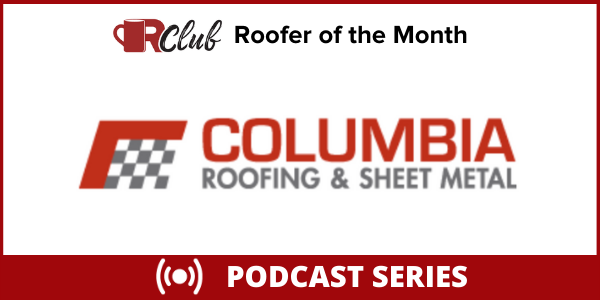
Columbia Roofing & Sheet Metal - PODCAST TRANSCRIPTION
Read More ...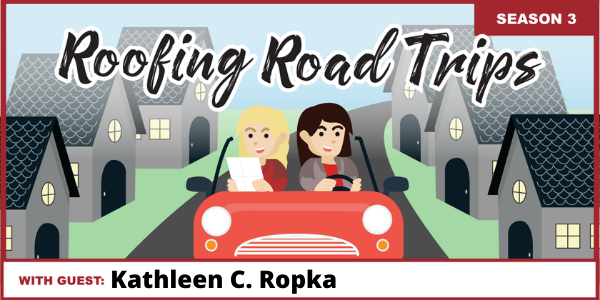
S3:E1 Kathleen Ropka - Getting to Know the Cotney Chicago Office - PODCAST TRANSCRIPTION
Read More ...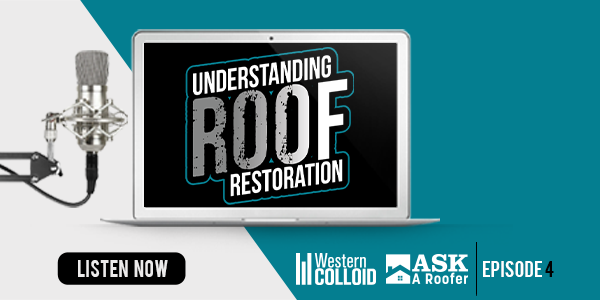
Understanding Roof Restoration Episode 4 - Hail Damage and Fluid Applied Reinforced Roofing - PODCAST TRANSCRIPTION
Read More ...

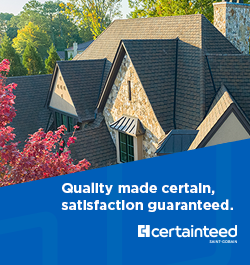
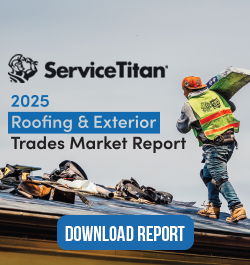




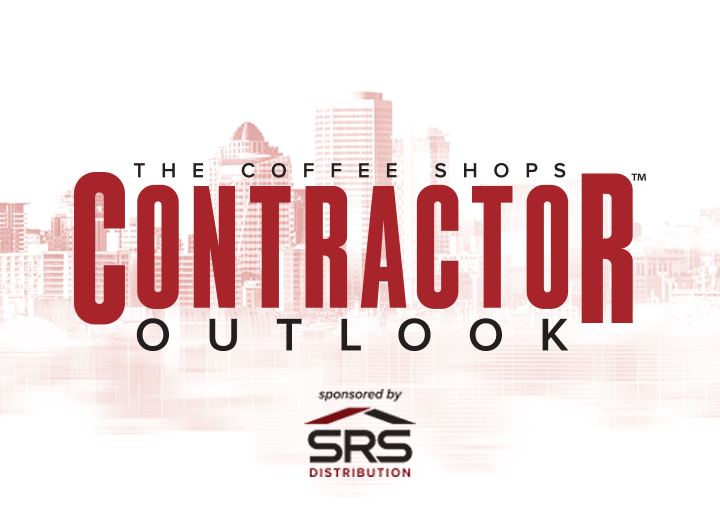


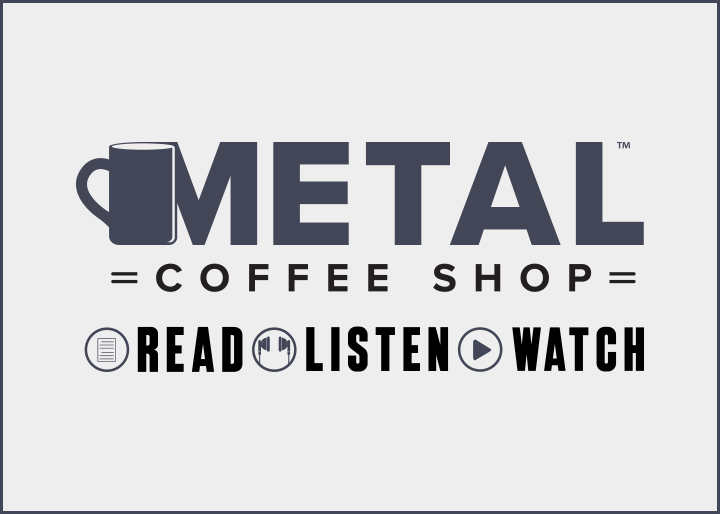








Comments
Leave a Reply
Have an account? Login to leave a comment!
Sign In